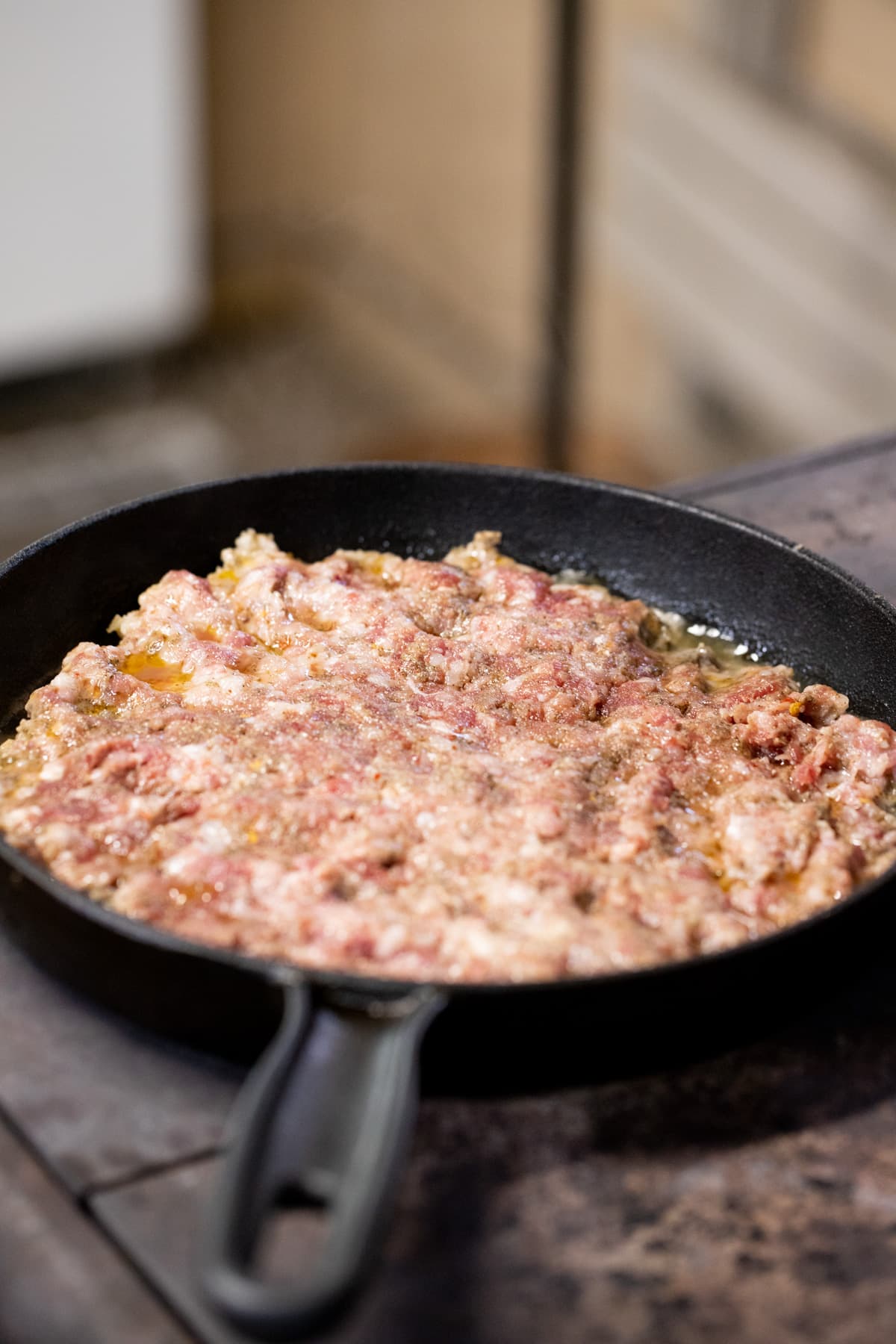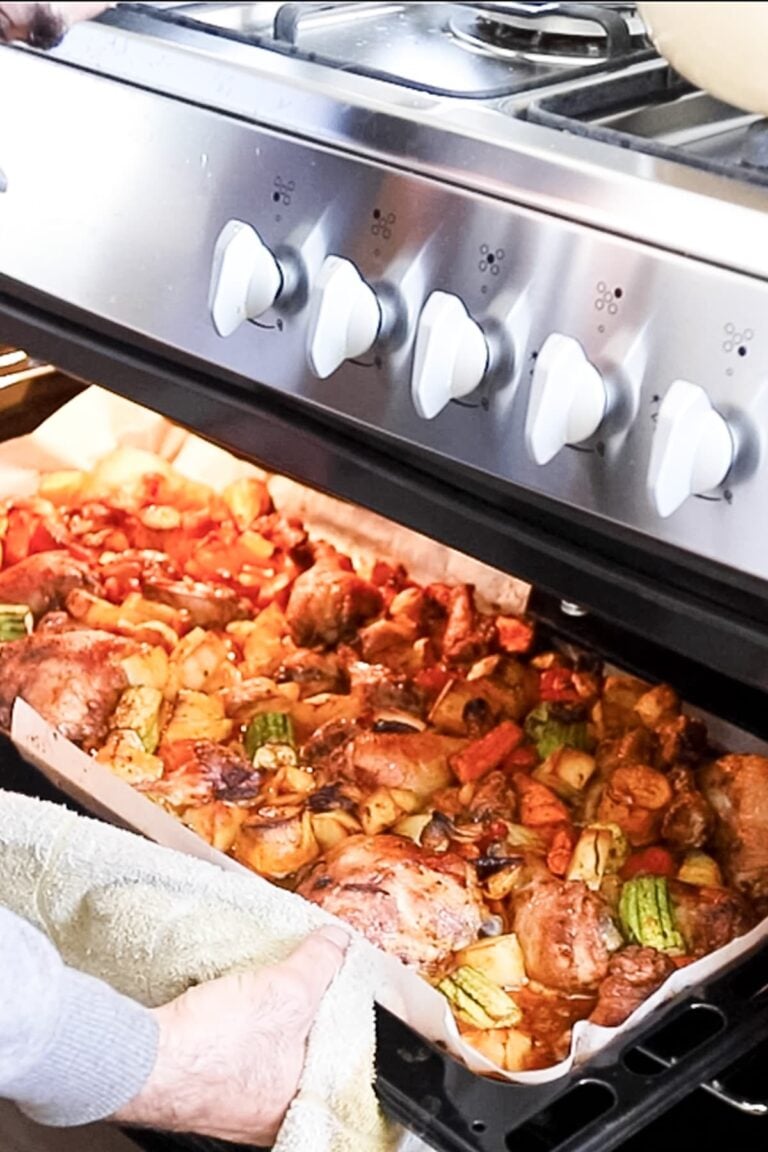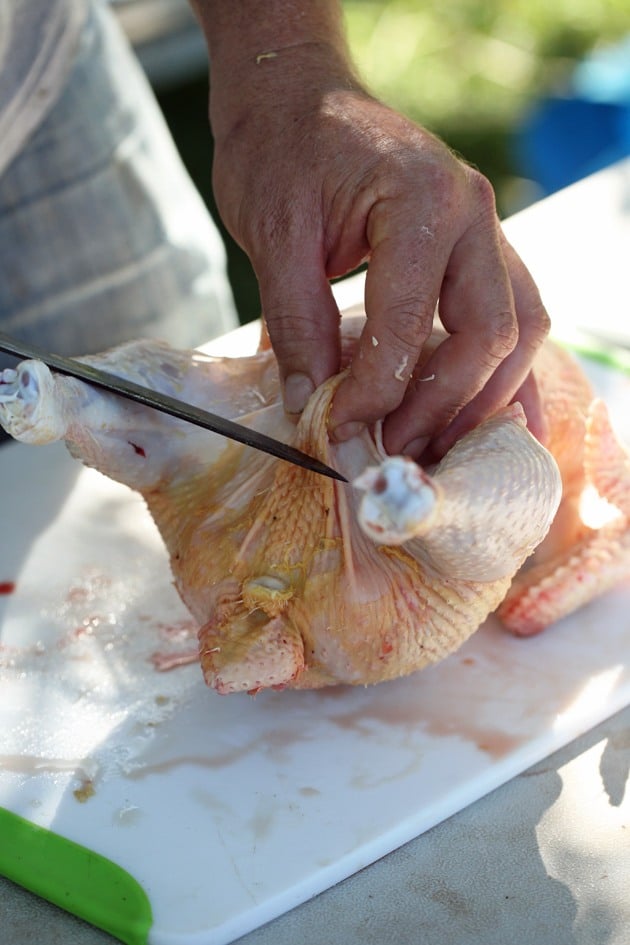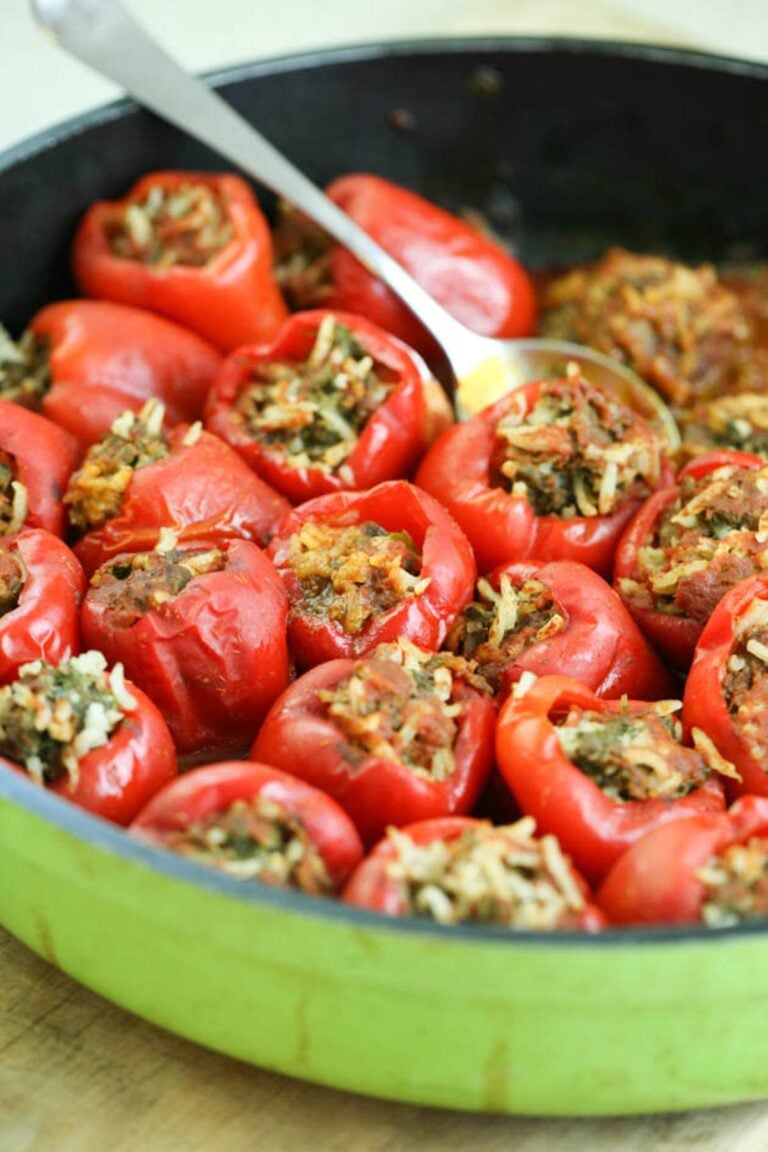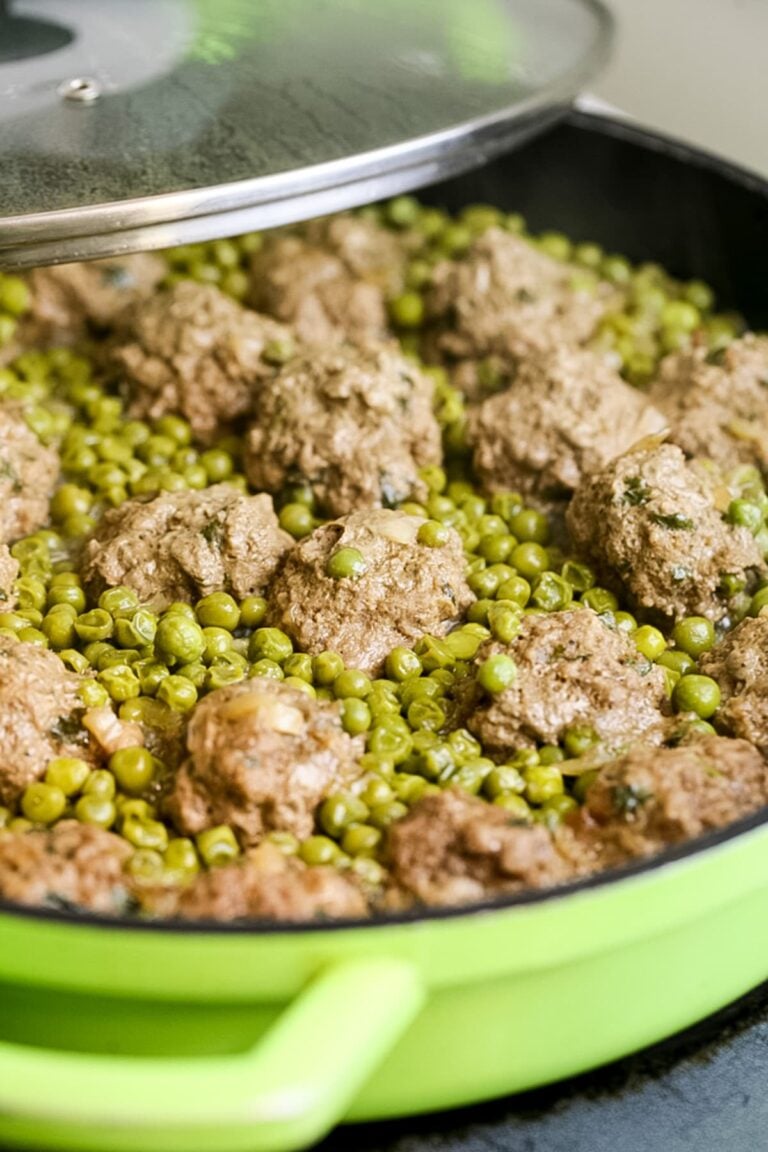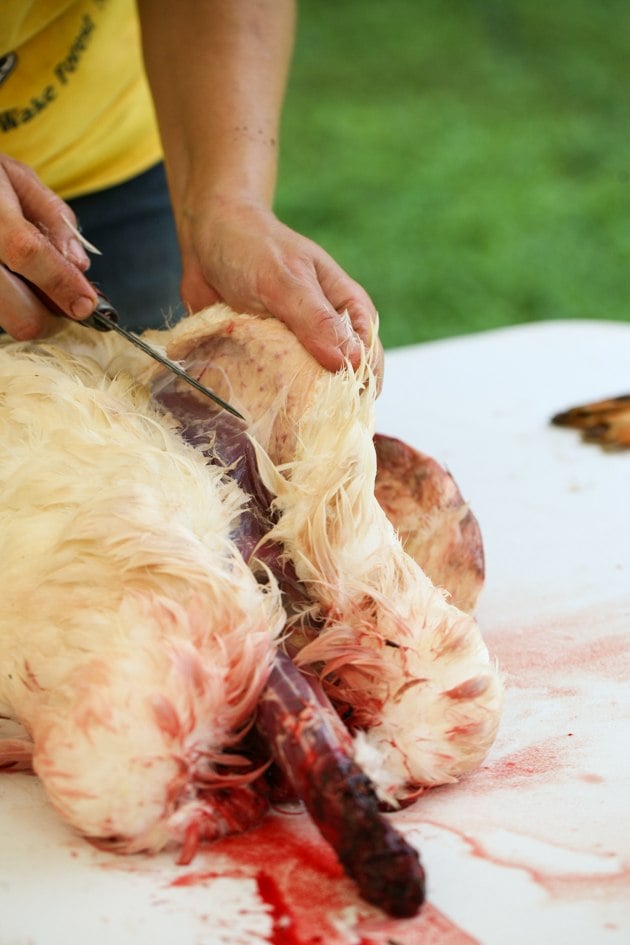Processing a Pig into Pork Breakfast Sausage
This post may contain affiliate links, view our disclosure policy for details.
Processing a pig into pork breakfast sausage might involve some labor but it is a rather simple process. In this tutorial, I’ll share the whole process with you, from pig to pork breakfast sausage.
Lady Lee’s Note…
If you’ve been following the blog for a while, you know that I have a lot of information here about butchering and processing animals for meat. I’ve shared with you how to process rabbits, turkeys, ducks, chickens, deer… But I haven’t had too much experience with processing a pig before. Part of the reason is that, aside from bacon, we don’t eat pork.
We are Jewish, and at home, growing up in Israel, we never ate pork. I wasn’t used to it but gave it a try when we moved to the US. I have to admit that most of the pork I’ve tasted (again, aside from bacon) was flavorless. I didn’t really enjoy eating it and therefore never raised pigs for meat.
I have a good friend who purchases two to three pigs from a local farm every year. He processes the meat into breakfast sausage… The whole pig becomes breakfast sausage. I was lucky enough to be invited to the “sausage-making party” and since I’ve never had much experience with a pig before I thought it would be fun to learn how it’s done.
Ingredients…
- A pig! In this tutorial, you’ll see us processing a whole pig. It was, in fact, a 400-pound pig. It arrived in a few large pieces that we had to skin and cut. I will have the measurements in the recipe card below for a 25-pound batch of meat.
- Sage rub
- Country Style Sausage Seasonings – we used the Doug Jeffords seasonings because it was available in bulk locally, but you can use any brand. I couldn’t find that brand on Amazon, however, there are a few others.
- Red pepper flakes
Kitchen Tools…
- Butcher block
- Very sharp knives
- Kitchen scale
- Large stock pots
- Large tub
- Heavy-duty meat grinder (if you are going to process a lot of meat)
- Ziplock bags or vacuum bags for storing
Processing a Pig…
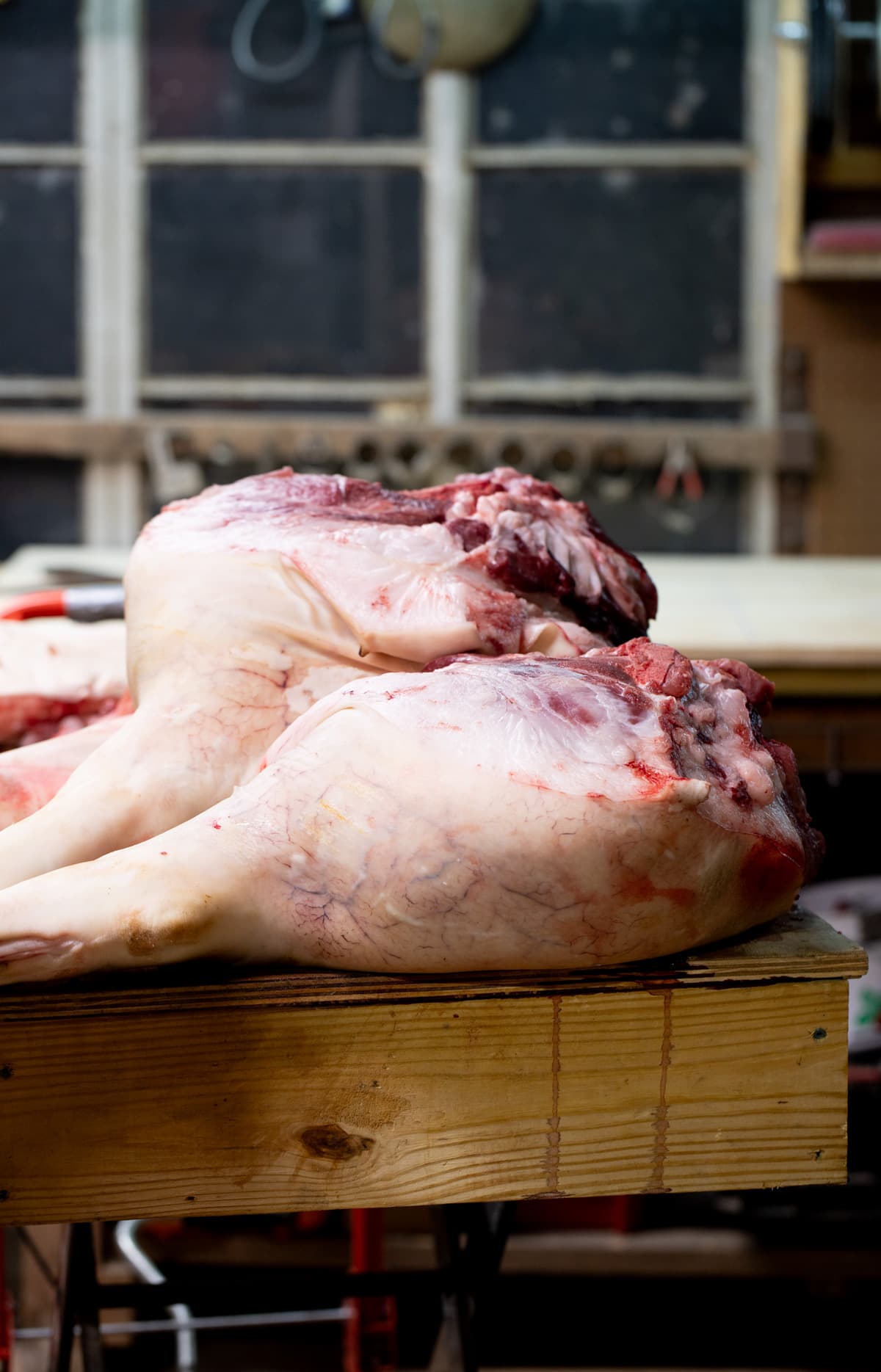
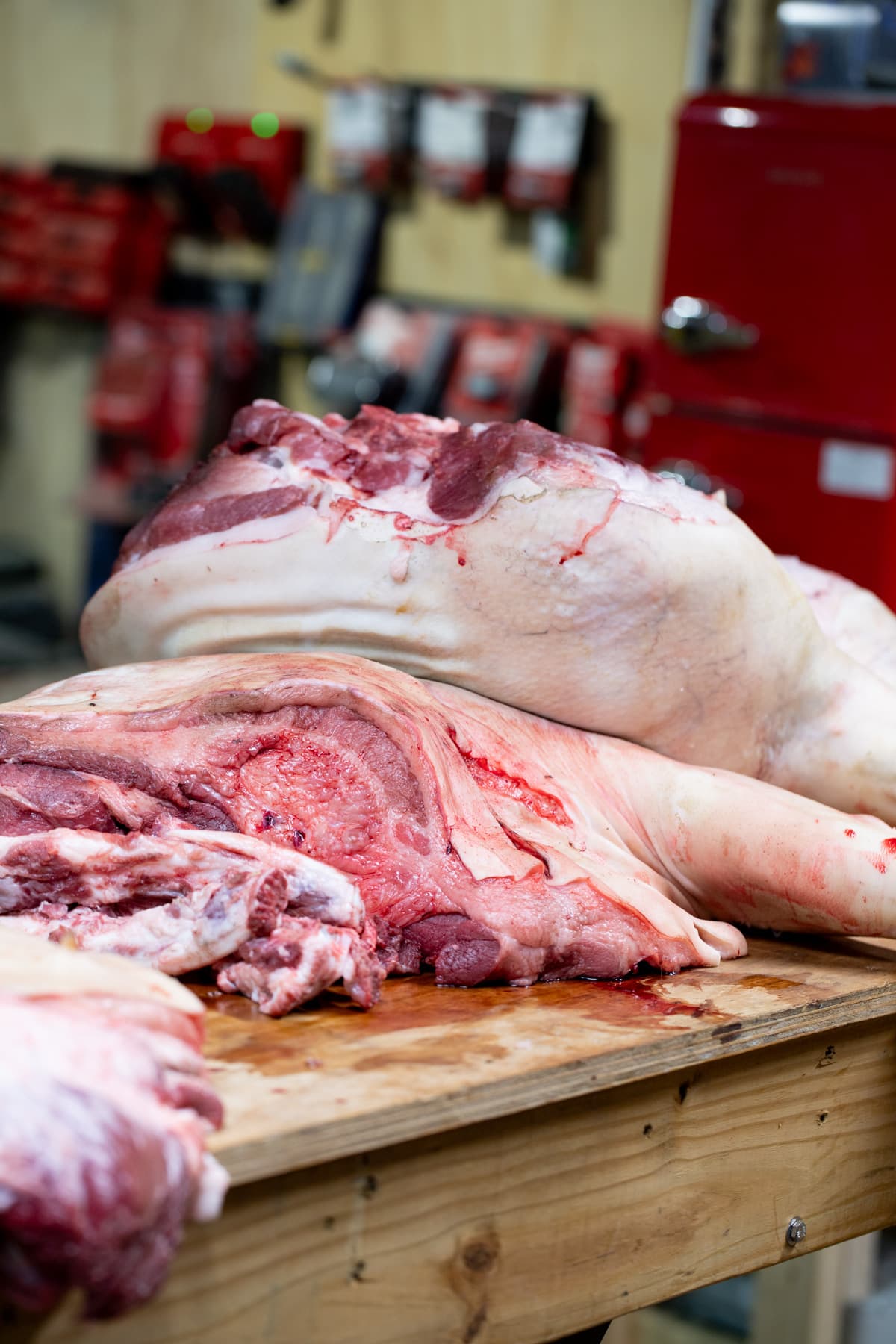
Step one – get your pig. Maybe you raise your own pigs or you get a whole pig locally, it doesn’t matter. If you raise your own pigs for meat, you’d have to slaughter your animal, scald it and scrape the hair off. You can also drive it to the closest butcher to do this work for you.
This pig that you’ll see us processing in this post, was purchased from a local farm. They do the killing and the scalding and hair scraping, and they cut the animal into four large pieces which are then sold by the pound.
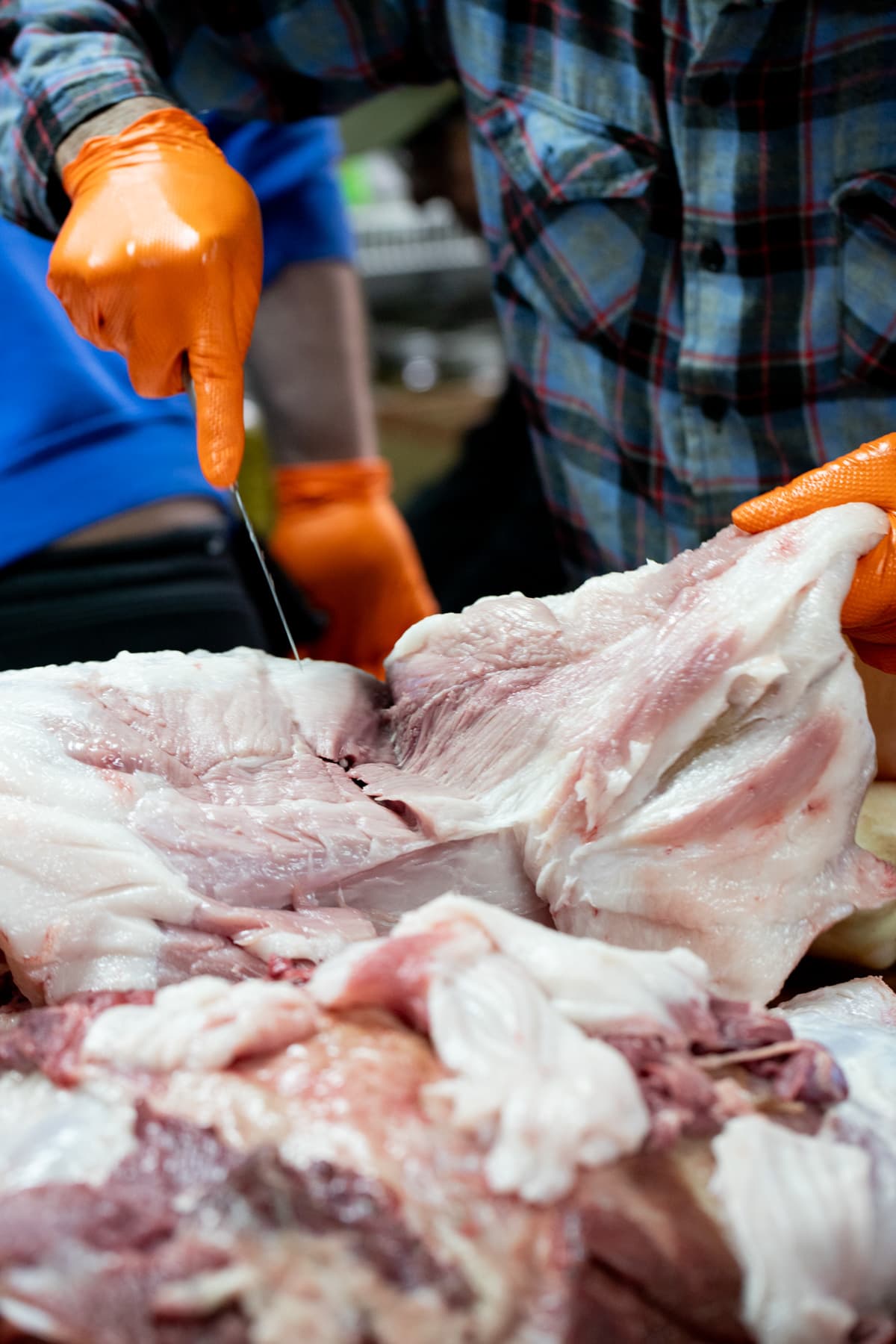
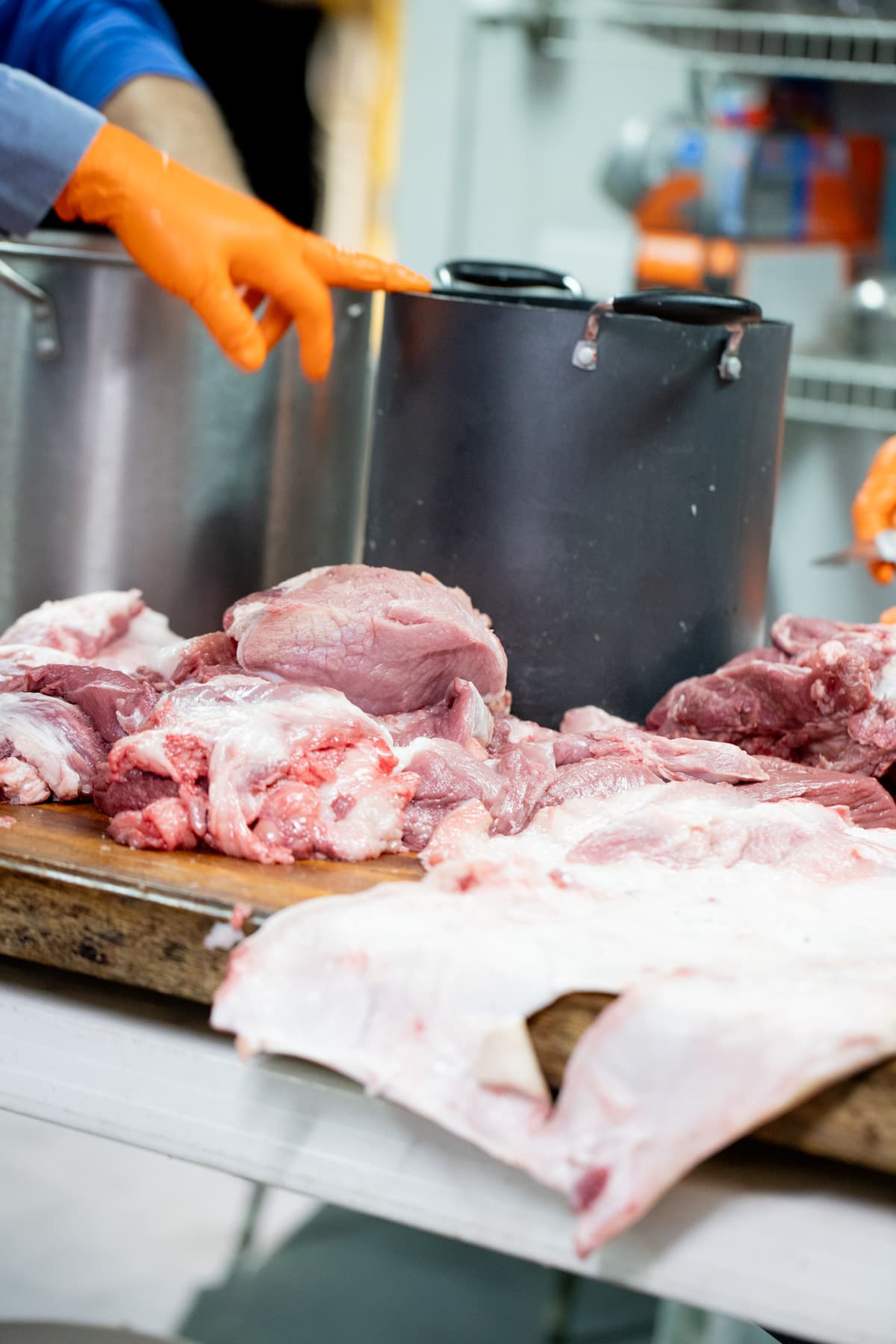
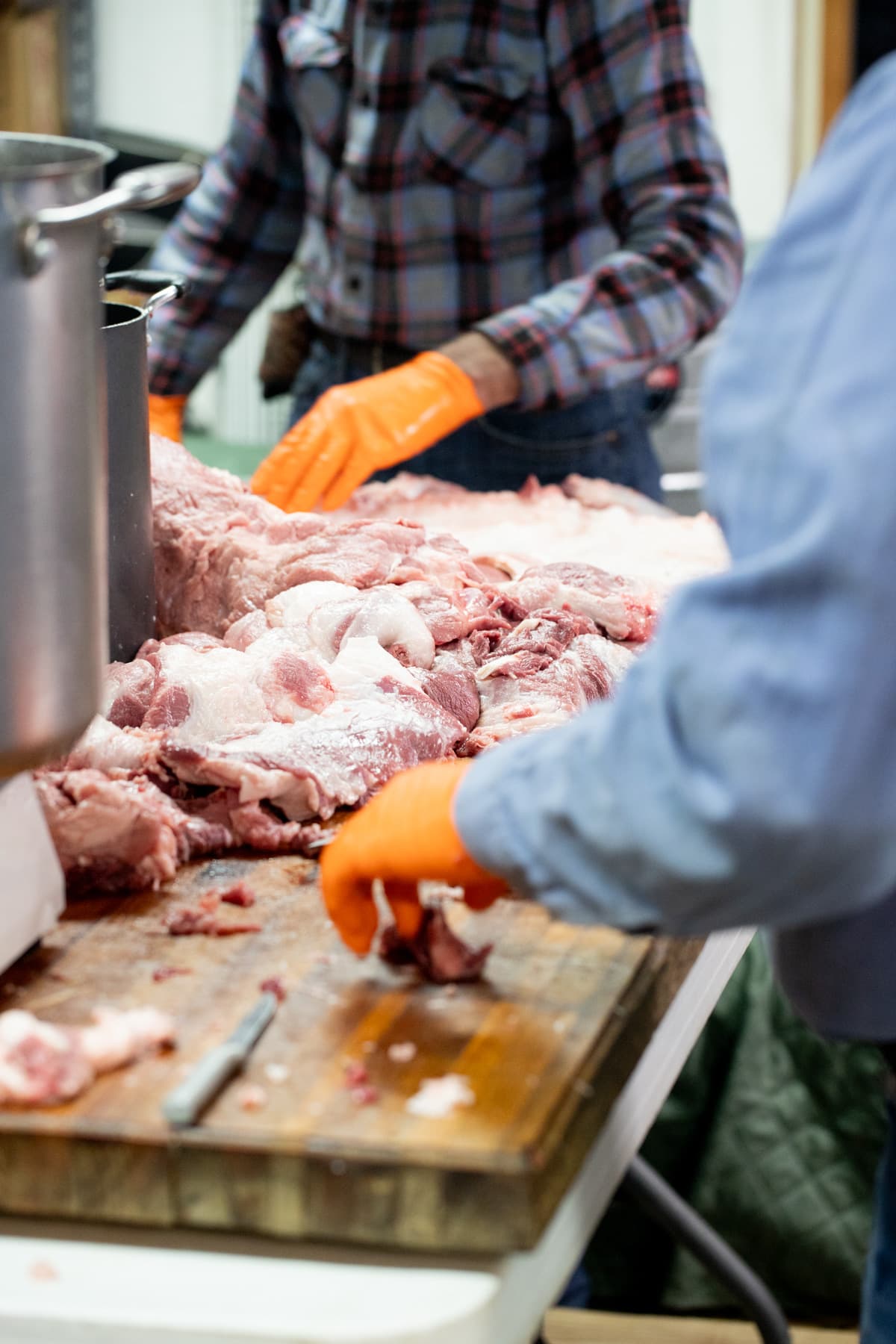
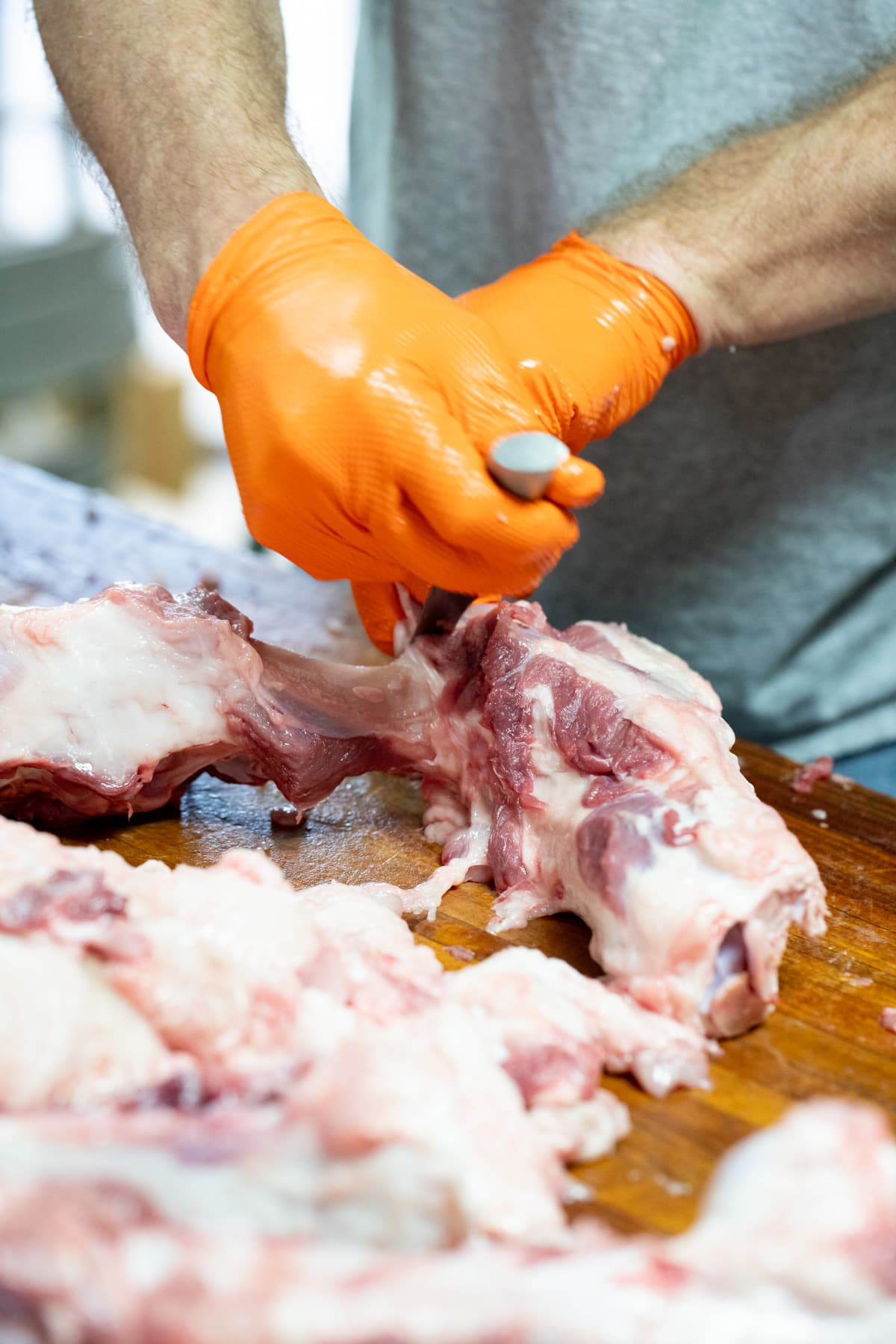
Step two – skin and cut the meat. Start by using a reciprocating saw to remove the pig’s lower part of the leg and the feet, then skin the pig. With deer or rabbits, the skin is separated from the meat and you can pull it right off. That is not the case with a pig. The skin is attached to the meat, so you have to cut it off. This is not too hard because there is usually a good layer of fat between the skin and the lean meat and you can make your cut into the fat.
I’ve never tried it but I know that some people fry the pig’s skin. It’s a popular snack that I often see in the stores here in the South. I took some of the skin to make dog treats for my beloved Shayla (you can watch how I did that here), she definitely deserves it! And you can also use the feet. Some people will clean them well and add them to soups and stews.
Once the feet and skin are gone, you want to take all the meat off the bones (which can also be used in soups and stews or as dog treats) and separate the lean meat from the fat the best you can. Cut the fat into pieces (they don’t have to be too small) and put them in one stockpot, then cut the lean meat into pieces and add that into a different stockpot.


Step three – weighing the cubed meat. Set an additional stockpot on a scale and add lean meat and fat in a ratio of 75% lean to 25% fat (unless you want it a different way, that’s just how we did it but it can also be 70/30 or 80/20). Make batches of 25 pounds of meat. If you follow the 75/25 ratio this will be 18.75 pounds lean plus 6.25 pounds fat. Once you have 25 pounds of meat on the scale, add the meat to a large tub…



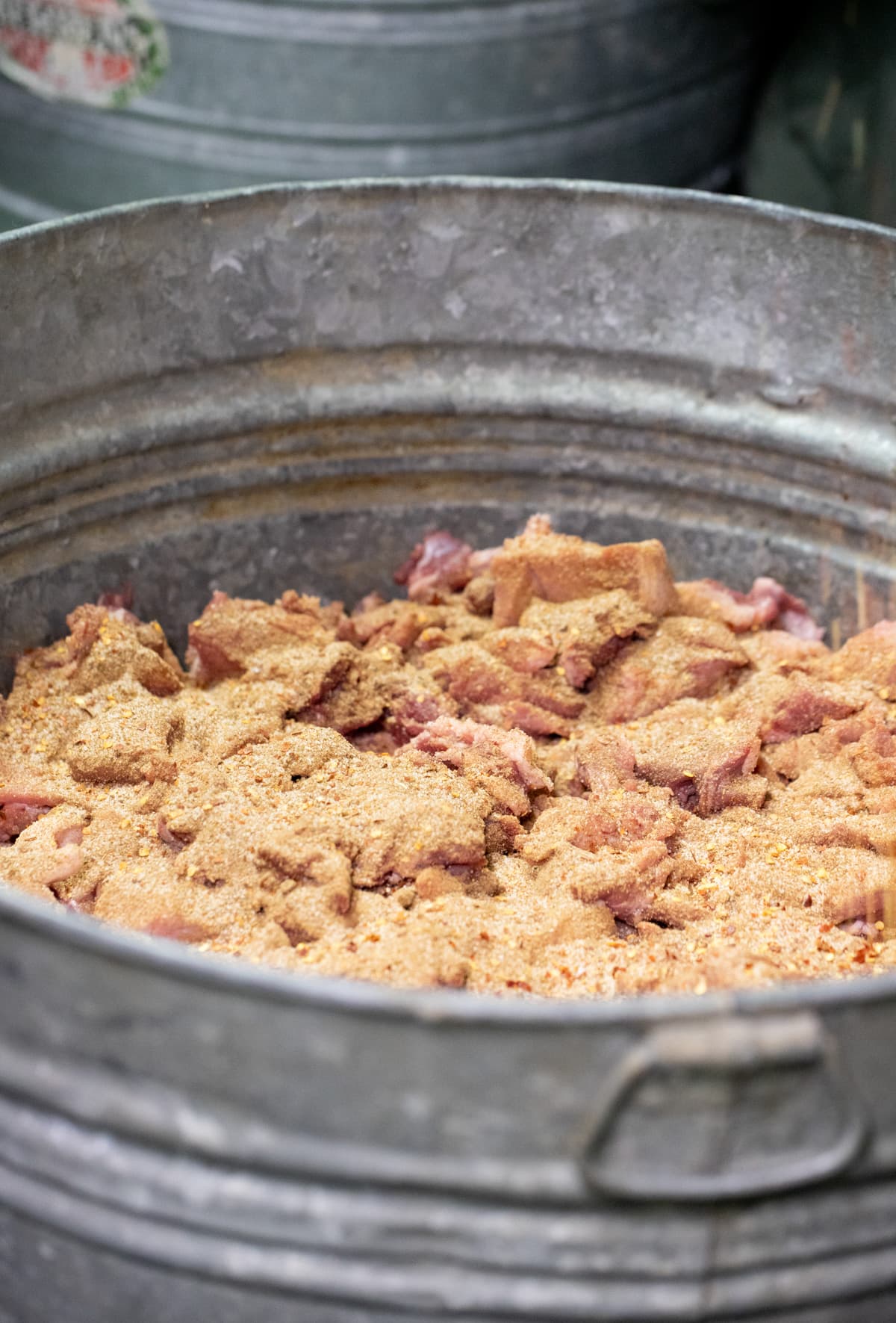
Step four – season the meat. Season every 25 pounds with 2-3 cups of sage rub, 10 ounces of country sausage seasoning mix, and 1/2-1 cup of red pepper flakes (depending on how hot you want your sausage to be). Use your hands to mix the seasonings into the meat and then let it sit for a few minutes. Next, add the next 25 pounds batch of meat on top of the already seasoned one, season again, mix, and let it rest a bit. Keep going until the large tub is full.
Making Pork Breakfast Sausage…

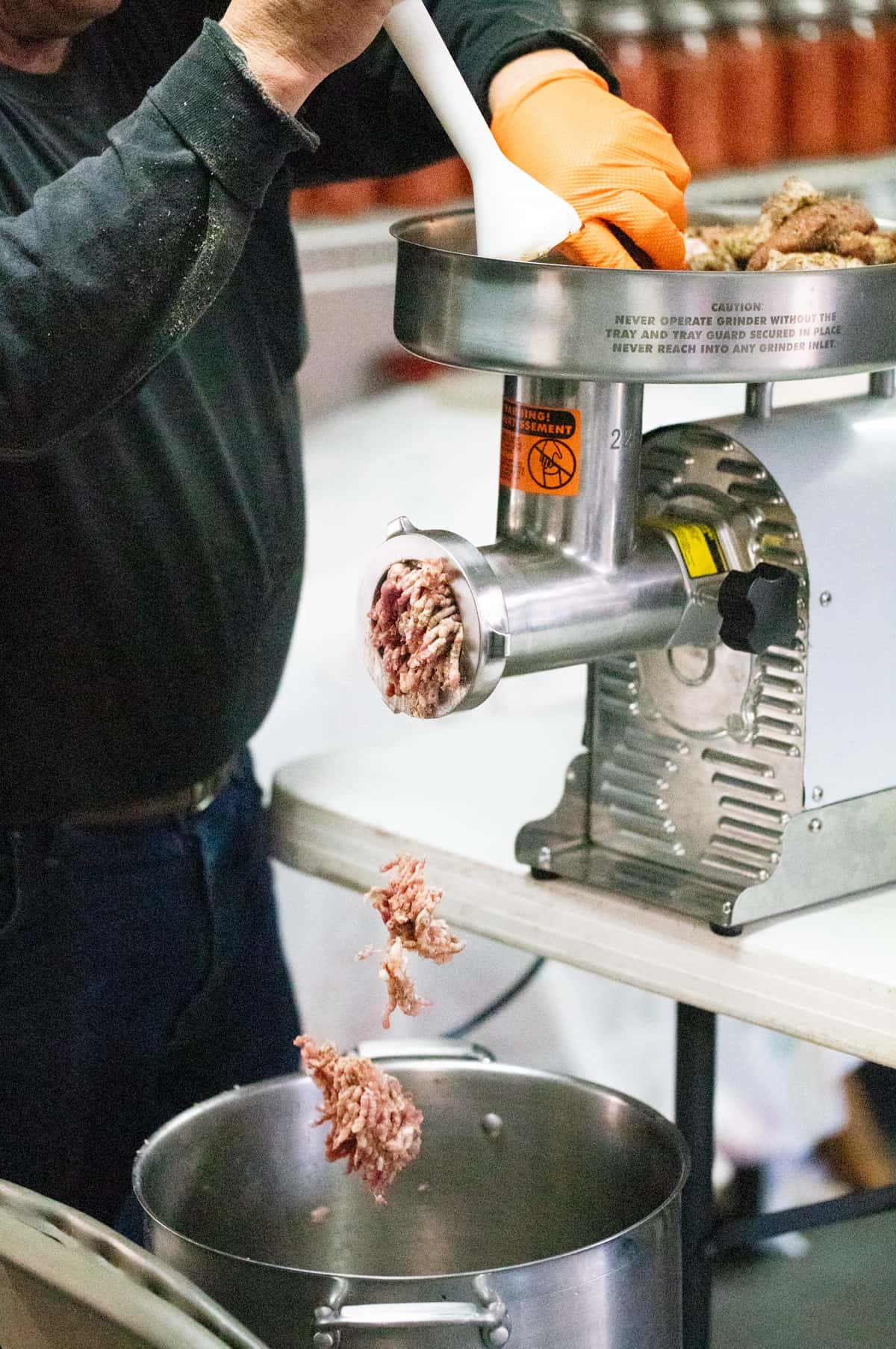
Step five – grind the meat. If you’re going to process a lot of meat, it’s a good idea to invest in a high-quality heavy-duty meat grinder. It’s also important that your meat is very cold or even half-frozen so it’s easier for the machine to handle. Start feeding the grinder the cut, seasoned meat. When your pot is full of ground meat add the meat to another large tub.


Step six – mix ground meat and correct seasoning. Now you want to give the ground meat a good mix to distribute the seasonings better. Then, before you pack your sausage, make a couple of patties (or one big one) and fry it. Taste. If you feel like you’re missing something in the seasonings now is the time to add it to the ground meat.

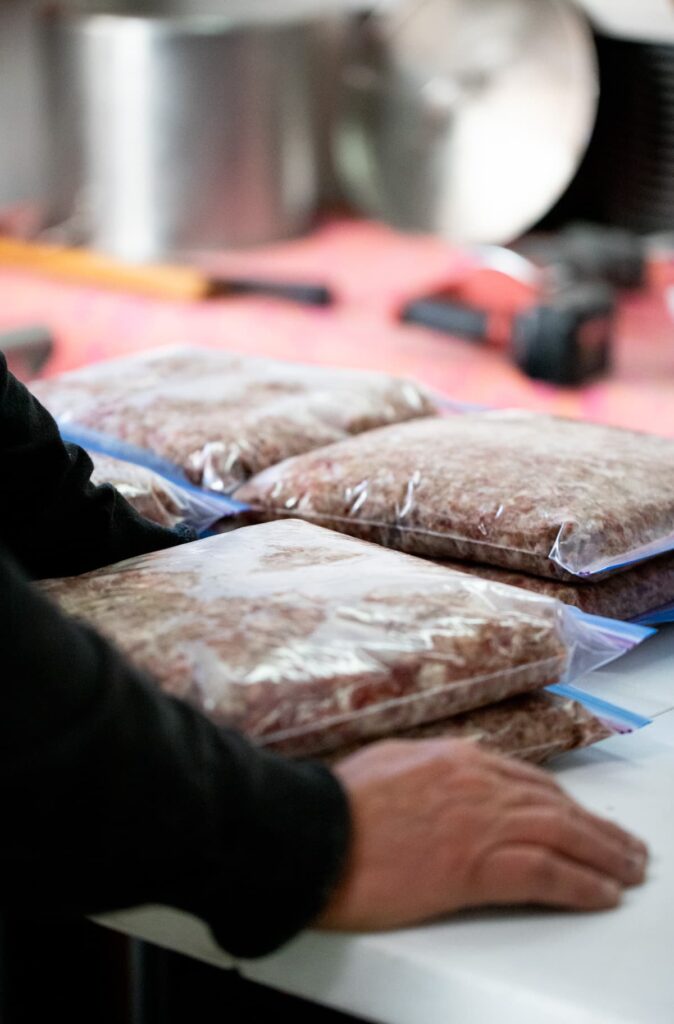
Step seven – pack the pork breakfast sausage. Lastly, pack your pork sausage! You can pack it in 1, 2, or 5 pound portions. However you want according to how you’re going to use it later. You can use zip-lock bags or you can pack the meat with a vacuum sealer, flatten the bags (this makes for easy stacking in the freezer, easy freezing, and easy thawing), and place the packed meat in the freezer.
How to Store Pork Breakfast Sausage…
- In the fridge – if you are going to use some of the sausage within a couple of days, you can store it in the fridge in a zip-lock bag or a container.
- In the freezer – most of the sausage is stored in the freezer in portions. It should last many, many months.
How to Serve Pork Sausage…
- As patties – make patties, however big you want them, and fry them for breakfast.
- With scrambled eggs – fry some of the meat in a pan (there should be no need to add oil), once the meat is slightly browned, add a scrambled egg on top and let it fry or scramble it with the meat.
- In breakfast tacos – fry some of the sausage and add it to your favorite breakfast tacos.
- Make link sausage – You can take this a step further and make sausage links. You have to have the sausage stuffer machine and the casings, but then it should be pretty simple.
Tips…
- Sharpen your knives – it’s always much easier to cut into meat if your knife is sharp. If you are processing a lot of meat, make sure to take breaks for knife sharpening.
- Cold meat – It’s easier to cut and grind meat if it’s very cold or even half-frozen. If you need to, bag the pieces of meat in one-gallon zip-lock bags and place them in the freezer for an hour or two so they are easier to handle.
- Have a pot of boiling water nearby – pigs have a lot of fat! It makes cleaning tools a bit harder. If you have a pot of boiling water close by, you can dip your knives and the fat will melt right off, then it’s much easier to clean up. Boiling water also makes it easier to clean surfaces.
- Save the skin and bones for the dog – I mentioned this before, I cut the skin into smaller pieces, wrap each bone individually, and freeze it for my dog.
- Fry the skin – I’m sure that it would be pretty simple to find a pig skin frying tutorial. It should be a yummy snack.
- Use the bones in soups and stews – even if you do the best job of taking the meat off the bone, you won’t believe how much meat is probably still there. If you add the bone to a soup or a stew and let it cook for a while, it will add a lot of flavor, healthy nutrients, and also meat to your dish!
Frequently Asked Questions…
Since we processed a big whole pig we did this outside in the shed. It’s usually better to find a cold morning for processing this much meat because the meat can stay cold and you don’t have to deal with flies. Fall is a great time to do this here in the south.
You can change the seasonings however you like! There are a ton of different combinations. You can add paprika, black pepper, cayenne, cumin, and on and on… Make it your own. You can also grind the meat without seasoning it. Then season small batches of meat with different seasonings. Fry a few patties and check which seasonings you like best before seasoning the rest of the meat.
No. You can stuff this pork breakfast sausage right into the casings.
I feed it to the dog. You can keep it cubed to add to other types of meat or you can also render it, jar the lard, and use it to fry pretty much anything.
This was such a great experience! I enjoyed hanging out with the guys and I enjoyed seeing how this is done. The sausage is really tasty and when you freeze it like this there are so many ways to use it and it’s so simple to use it. I hope you enjoyed this pig processing tutorial!
More Healthy Recipes…
- Raising Cornish Cross Chickens for Meat
- How to Cook a Rabbit
- Deer Jerky in the Oven
- Fried Chicken Meatballs
- Grilled Whole Tilapia Recipe
- Chicken Gizzard Recipe
- Middle Eastern Chicken And Rice
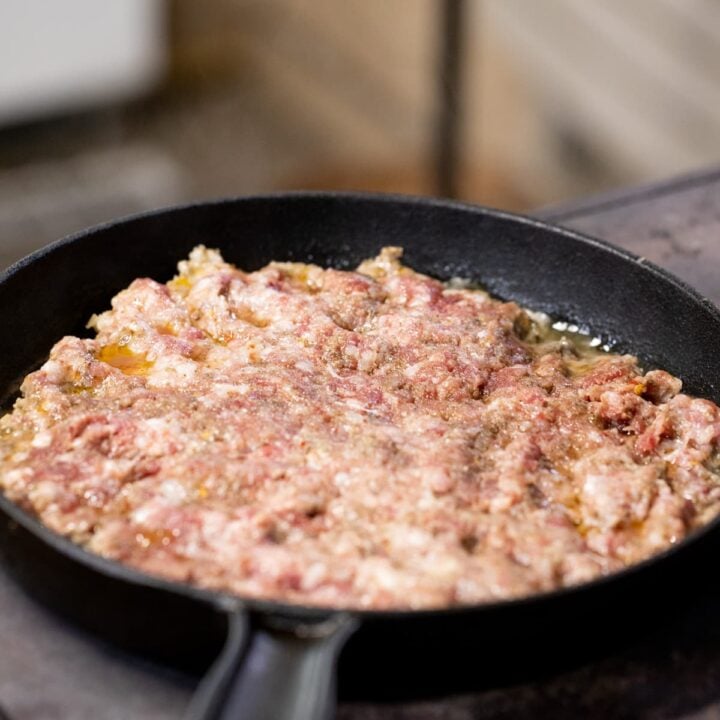
Pork Breakfast Sausage
Delicious and easy pork breakfast sausage recipe.
Ingredients
- 25 pounds of pork
- 2-3 cups of sage rubbed
- 10 ounces country sausage seasoning mix
- 1/2-1 cup of red pepper flakes
Instructions
- In the post, I show you the whole process of skinning and cutting the pig. In order to make this recipe card short and to the point, we are going to assume that you're starting with 25 pounds of meat pieces at a ratio of 75% lean to 25% fat. This is the ratio we like, however, it can also be 70/30 or 80/20... However you like it.
- Place the meat in a large mixing bowl and season with the sage, sausage seasoning mix, and red pepper flakes. Use your hands to mix the seasonings and the meat together. Let the meat rest for ten minutes or so.
- Grind the meat. In order for this task to be easy on you and the machine, make sure that the meat is cold or even half-frozen. If you have to, place the bowl in the freezer for an hour or two before grinding.
- Grind a small batch, mix the ground meat to distribute the seasonings better. Then, make a couple of sausage patties and fry them. Taste. If you feel like you need to adjust the seasonings do it before you grind the rest of the meat.
- Transfer the ground meat into another large mixing bowl. Give it a good mix to distribute the seasonings better, then pack your breakfast sausage. You can pack it in zip-lock bags or with a food vacuum sealer. Pack in 1, 2, or 5 pound packages or any other portion depending on how you're going to use it later. Flatten the bags (this makes for easy stacking in the freezer, easy freezing and easy thawing), and place the bags in the freezer.
Notes
Frequently Asked Questions...
- Can I change the seasonings?
You can change the seasonings however you like! There are a ton of different combinations. You can add paprika, black pepper, cayenne, cumin, and on and on… Make it your own. You can also grind the meat without seasoning it. Then season small batches of meat with different seasonings. Fry a few patties and check which seasonings you like best before seasoning the rest of the meat. - Is there anything I need to change if I want to make sausage links?
No. You can stuff this pork breakfast sausage right into the casings. - What should I do with leftover fat?
I feed it to the dog. You can keep it cubed to add to other types of meat or you can also render it, jar the lard, and use it to fry pretty much anything.


